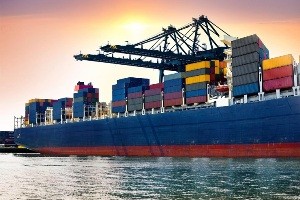 After 25 months of uninterrupted contraction, exports of goods from Latin America and the Caribbean (LAC) are back on the path to growth.
After 25 months of uninterrupted contraction, exports of goods from Latin America and the Caribbean (LAC) are back on the path to growth.
After shrinking by 3.3 percent in 2016, the year-on-year growth between January and June 2017 reached 13.2 percent. Similarly, exports of services, which had already picked up in 2016, grew by 9.7 percent in the first quarter according to the Trade and Integration Monitor 2017, recently published by the Inter-American Development Bank (IDB).
This recovery in export values in the first half of 2017 was widespread: Mesoamerica’s (Central America and Mexico) foreign sales grew by 10.1 percent while those of South America and the Caribbean increased more markedly, at 16.1 percent and 17.9 percent, respectively.
However, the report suggests that this growth is fundamentally explained by the increase in commodity prices. It also argues that the growth in export volumes was moderate and was limited to a handful of economies.
Between 2010 and 2015, in the wake of the global financial crisis, Latin America and the Caribbean lost some of its global market share due not only to the region´s limited number of export commodities but also to reduced competitiveness. This share went from 6.16 percent to 6.07 percent, which represents a loss of US$14.3 billion for the region.
Mexico is the only country in the region that has managed to significantly increase its market share. In fact, during the same period, Mexican exports grew by 30.4 percent and came to account for nearly 40 percent of total exports from LAC in 2015. As a consequence, excluding Mexico, the global market share of the regional dropped by 14.8 percent between 2010 and 2015.
“Beyond the recovery, Latin America and the Caribbean is facing a trade scenario that is substantially less favorable than before the global financial crisis. The region needs a new generation of international integration policies. It is all about boosting competitiveness, regaining global share and make the most of the opportunities that come with disruptive technologies like e-commerce,” said Paolo Giordano, Principal Economist at the IDB’s Trade and Integration Sector, the editor of the report.






 LATEST ON
LATEST ON
Tweets by @i955fmTWITTER
FACEBOOK
This message is only visible to admins.
Problem displaying Facebook posts.
Click to show error